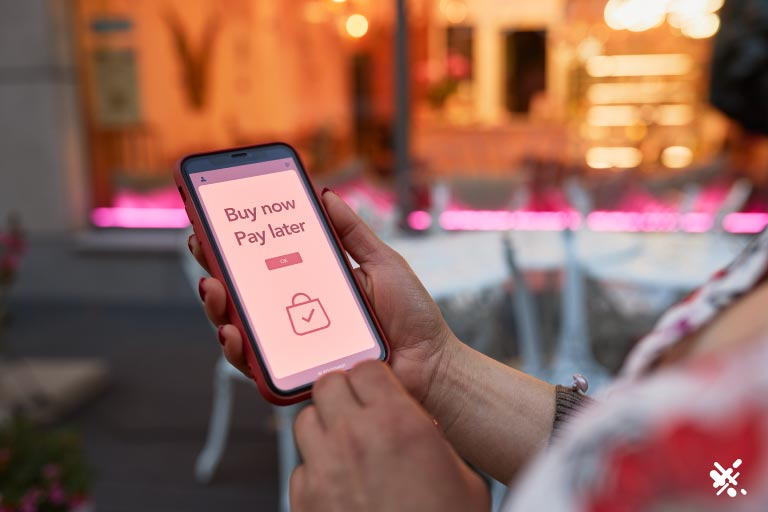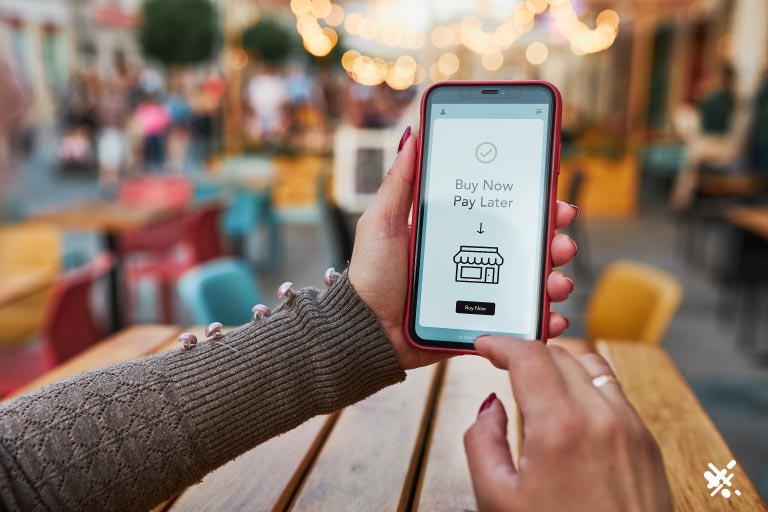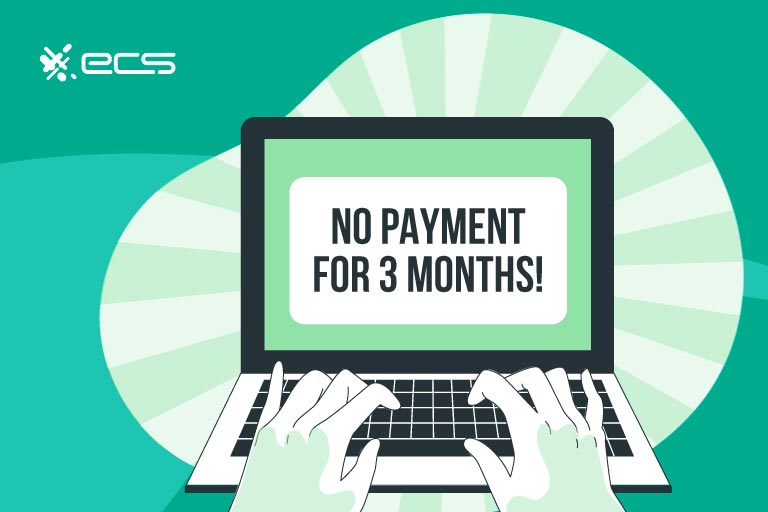If you’ve done any online shopping in the last few years, you’ve no doubt come across Buy Now Pay Later buttons or advertisements when checking out.
This can be a tempting option for consumers as they wrestle with higher costs of day-to-day items that cause them to have less discretionary spending.
So seeing an option to not have to pay the full price for an item when ordering and spreading the payment out over months can be a very attractive prospect.
Some merchants also like providing this option for their customers in the hopes that it will generate more sales and especially higher ticket sales that consumers may not have been able to afford otherwise.
Overall, this seems like a great outcome for all parties involved. In some cases, that is the case. But in other cases, Buy Now Pay Later apps and options can have risks and downsides for both customers and merchants.
Below, we’ll go over the details of Buy Now Pay Later services and how they work for both customers and merchants. We’ll also go over the risks and benefits so you can choose as to whether these services are right for you.
What Is Buy Now Pay Later?
As the name suggests, Buy Now Pay Later (Buy Now Pay Later) services essentially allow customers to make purchases immediately even though they may not have the full funds available. They are also sometimes referred to as Order Online Pay Later and cater to those who may have a poor credit history.
Buy Now Pay Later services generally offer various payment plans that customers can choose when finalizing their purchases. Buy Now Pay Later services are also separate from the merchant’s website and operate independently of the merchant’s other payment solutions.
For customers, when they are checking out, they will see a Buy Now Pay Later link or advertisement. When the consumer clicks on this payment option, they must input basic information, similar to the checkout page. Often, the Buy Now Pay Later does not run a hard credit check. In some cases, however, it runs a basic or soft check to see the customer’s payment history.
After approval, the customer must pay a down payment at the time of checkout. This is usually around 25% of the total purchase. The customer then agrees to monthly or weekly interest-free installments until the total is paid.
Some Buy Now Pay Later plans will deduct monthly installments directly from the customer’s bank account. At this point, the purchase for the customer is complete and they simply await the arrival of their merchandise.

How Buy Now Pay Later Works For Merchants
Setting up Buy Now Pay Later for merchants is a bit different from other payment options they may already be using.
To begin, a merchant will choose a Buy Now Pay Later service to work with. There are several available and we’ll touch on those in a different section. Once selected, the merchant will sign an agreement with the service, similar to other payment services.
The merchant will then integrate the Buy Now Pay Later service into their existing shopping cart software and checkout pages. The merchant is free to inform the customer of the Buy Now Pay Later options at any time and anywhere on their website.
If offering this service, it’s generally best for merchants to mention it on individual product pages instead of just waiting for the checkout page. Since Buy Now Pay Later services are meant to stimulate impulse purchases, informing customers on product pages often works best.
When customers select the Buy Now Pay Later option, most integrations still keep the customer on your checkout page and do not bring them to a different site. The Buy Now Pay Later service will run a soft credit check and return either an approval or denial.
If approved, the customer completes the checkout process and the order is complete for the merchant. The Buy Now Pay Later service will credit the merchant with the full purchase price as per their agreement.
The merchants subsidize the Buy Now Pay Later services and pay a fee ranging from 2% to 8% per purchase using the service. The customer pays no extra fees. Although, they may pay late fees if they miss a payment. But the Buy Now Pay Later service handles these, not the merchant.
Once the purchase is complete, the merchant no longer deals with the customer regarding payments.
The Two Types Of Buy Now Pay Later Services
Buy Now Pay Later services are grouped into two main categories that both merchants and consumers need to be aware of. Fees and other costs are the main difference between these two types of Buy Now Pay Later services.
Merchant Transaction Fee Loans
Buy Now Pay Later services offer point-of-sale (POS) loans right at checkout. The customer pays no interest on these loans and instead, merchants offering the service pay a fee of 2% to 8% per transaction and sometimes an additional transaction fee on each purchase.
Shopper Interest Loans
This is a less popular option, but these work more like traditional loans or lines of credit. With these, the merchant pays no extra fees and instead, the Buy Now Pay Later service charges the customer interest along with possible other fees.
This is better for merchants. However, customers are less attracted to these as they are similar to simply using a credit card. Since they require a credit check, most customers who qualify will already have credit cards to simply finance the purchase themselves.
Risks Of Buy Now Pay Later
Buy Now Pay Later is a payment tool that has benefits for both merchants and customers. But there are risks involved that you should note so that you can decide whether or not these services are right for you.
Customer Confusion
Because the most popular services are integrated right into the merchant’s checkout page, there may be confusion among customers about whom they are doing business with.
If the customer is charged late fees or other fees after the purchase due to missed payments, the customer may feel it’s the original merchant who is behind the fees.
Granted, most agreements merchants have with Buy Now Pay Later services protect them from this. However, the customer may still be unhappy with the service and not be aware it’s a separate service they have the issue with and not the merchant themselves.

High Fees For Merchants
Another risk or downside of Buy Now Pay Later services is the higher fees over other traditional payment options. Some of these fees go as high as 8% per purchase. This is often more than double the fees the merchant pays if it was a traditional credit card transaction. Many Buy Now Pay Later services also charge a per-transaction fee on top of this.
The argument in support of these fees suggests that merchants will gain so many new sales due to the Buy Now Pay Later options that it more than pays for the higher fees.
However, this may be hard to quantify for many merchants who don’t conduct detailed sales analytics.
Determining how many Buy Now Pay Later customers would have never purchased without that option is hard to determine. Unless the merchant conducted detailed A/B testing over a period of weeks or months, they would most likely simply be guessing as to the effectiveness of offering Buy Now Pay Later.
If you do decide to use one of these services, it would be smart to conduct a controlled A/B test to see how customers reacted to the addition of Buy Now Pay Later as an option on your checkout page.
Increase In Fraud
Buy Now Pay Later services also open the door for increased fraud across the whole electronic payment sector. Many services have account logins so customers can use the same login to make purchases at any merchant who offers the service.
In these cases, there is no other security check. Therefore, anyone who compromises a Buy Now Pay Later account can make fraudulent purchases that may not be detected by the original account holder for up to a month.
Most Buy Now Pay Later services have agreements with merchants that offer protection from this fraud. But it still can be a damaging situation due to the customer confusion we mentioned above. Many customers who dispute Buy Now Pay Later services believe that the merchant manages them, not a third party.
No Points Or Rewards
This affects customers who choose Buy Now Pay Later over using a credit card. Most credit card users collect points or other rewards that they can use for discounts or cash back. Using Buy Now Pay Later services for large purchases does not count toward any rewards, so this can be a loss for some customers who take advantage of these reward programs.
Benefits Of Buy Now Pay Later
Despite the risks and lack of regulation over Buy Now Pay Later services, there are still benefits that merchants and customers can enjoy.
Increased Sales
The most obvious benefit for merchants is the possibility of increasing sales by offering an interest-free payment option where the customer purchases and pays the full amount over time.
Having the option to secure a purchase with a lower amount due at checkout can sometimes push customers over the edge who may have otherwise abandoned their cart. As mentioned, it can be difficult to measure precisely the number of purchases made solely due to the Buy Now Pay Later option without using detailed analytics.
Increase Average Ticket Size
Another benefit is that customers may be willing to buy that bigger ticket item if their initial cost at checkout is lower and more manageable. This can increase average ticket size and the lifetime value per customer assuming they keep current with their payments and don’t overextend themselves.
Sell To Customers With Lower Credit Scores
Those with sufficient credit and credit limits will likely see no benefit nor find attraction to most Buy Now Pay Later offers. However, those with lower credit scores and less room on their credit cards will now be potential customers for higher ticket items than they could otherwise afford.
Cater To Younger Customers
Most Buy Now Pay Later buyers are younger, either millennials or Gen Z customers who may not have sufficient credit for larger purchases. By offering Buy Now Pay Later services, you can market to these younger customers if your product fits their interests.
Increase Repeat Business
Assuming a customer using Buy Now Pay Later stays current with their payments and doesn’t accumulate recurring late fees, they may be more willing to shop at your business next time over a competitor who doesn’t offer Buy Now Pay Later.
Of course, you can cut it both ways. A customer who has a bad experience with a Buy Now Pay Later service offered on a merchant’s site may not have a positive view of that merchant afterward. This is why merchants need to research any Buy Now Pay Later relationship carefully.
Common Buy Now Pay Later Services
Buy Now Pay Later services are part of a new fintech industry that is expected to grow rapidly over the coming years as their use increases.
Below are today’s most popular services.
Klarna
With nearly 150 million users, Klarna is one of the largest providers of Buy Now Pay Later services. They offer several options for customers including choosing to pay in three equal installments or choosing a “pay in 30 days” option.
They also offer longer terms in some cases.

Affirm
Affirm is another well-known Buy Now Pay Later service that offers customers financing from one to 48 months. It can however, charge interest rates as high as 36%. This can be a shock to customers who don’t read the fine print or fully understand their contract. Affirm divides installments into monthly payments.
One important note about Affirm is that the company does not refund any interest paid if a customer returns an item.
Afterpay
Afterpay charges zero interest and instead only charges customers if they are late on a payment. This can be $8 or up to 25% of the purchase, whichever is lower.
Merchants using Afterpay will generally pay a higher transaction fee due to Afterpay not charging customers any interest.
Afterpay handles refunds somewhat differently. Since there is no interest, customers need not worry about refunded interest.
However, they will still need to pay while the merchant processes the return. Afterpay users may only receive a partial refund of the purchase amounts after a certain period of time instead of a full refund. Although, this can vary depending on the item purchased.
Sezzle
Sezzle only offers one payment option: 4 installments over 6 weeks. Customers can reschedule 1 payment, but any other rescheduling incurs a late fee. Although Sezzle advertises that they don’t charge late fees, this rescheduling fee is essentially a late fee.
Returns with Sezzle must first go through the merchant, who refunds Sezzle. Sezzle then processes the return and if approved returns any payments made to the customer.
Wild West Of Buy Now Pay Later
Buy Now Pay Later services exploded in the last few years. Part of this was due to the pandemic lockdowns. Resulting in a huge boost for almost all eCommerce services. This created much speculative interest in these new fintech companies but also meant there was little regulation in this new space.
Many experts agree that there will likely be oversight and regulation coming to the Buy Now Pay Later industry in the coming months or years. While this may not be a specific risk to merchants, it is something to be aware of if deciding to use these services. Merchants will want to keep an eye on any changing regulations so that they can remain compliant.
For example, new regulations may require you to include specific wording and disclosures on certain areas of your website regulations.
Another issue may be upcoming changes to the way you can market Buy Now Pay Later services on your site or in advertising materials.
These changes haven’t happened yet. However, merchants need to be aware of possible new regulations that they will need to follow in this evolving area of payment options.
Another concern is that many analysts believe these companies are mostly operating at a loss to quickly gain market share. While not uncommon these days, this could mean there may be a time when several of these companies are no longer able to sustain their operations.
Buy Now Pay Later Credit Card Alternatives
Credit and debit card companies are now offering services to compete with Buy Now Pay Later services so they can maintain market share and also help customers have more options with possibly better free structures than Buy Now Pay Later.
For example, American Express offers its Plan It service. It is similar to a Buy Now Pay Later service but available to American Express holders.
Chase also offers their own My Chase Plan to anyone who has a credit card issued by Chase. This allows customers to set up payments for their purchases made with Chase-issued cards.
Citi also offers a similar service known as their Flex Pay program. It can be used like a Buy Now Pay Later service but with better terms in most circumstances.
Additional Help With Merchant Payment Solutions
If you’re a merchant and want to learn how you can integrate more payment options for your business, contact ECS Payments.
We can help you decide on the right payment solutions for your business as well as information on how to take advantage of new payment solutions offered by the major credit card companies.
Contact ECS Payments sales to learn more about increasing your sales by using the latest payment solutions that benefit both you and your customers.
